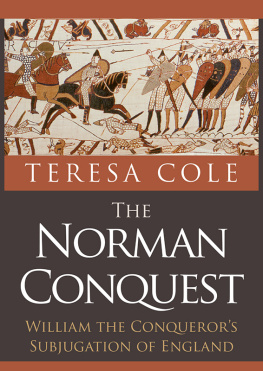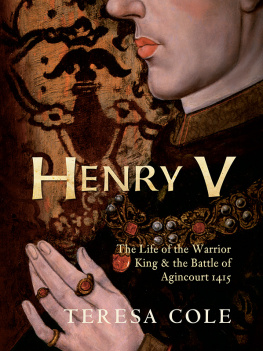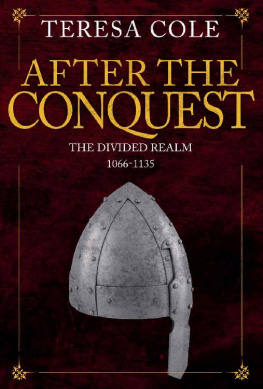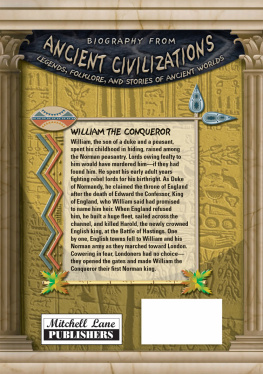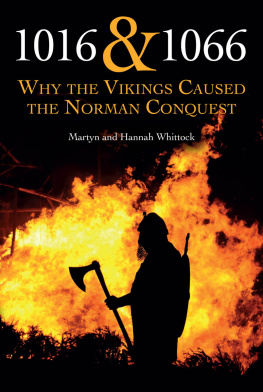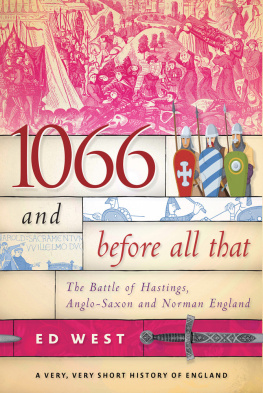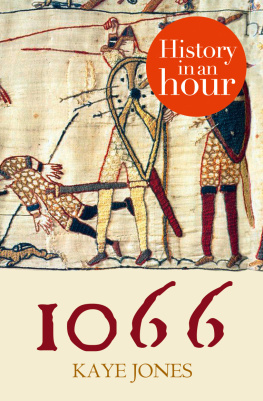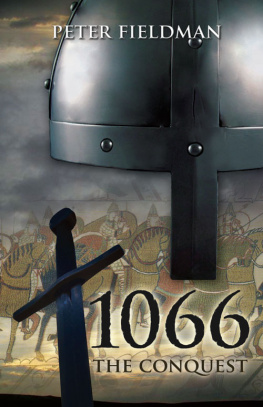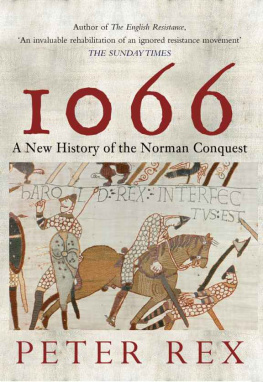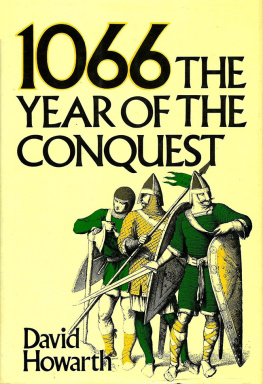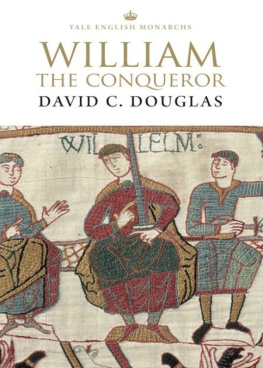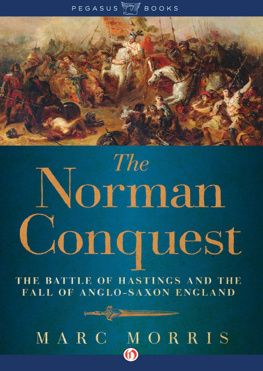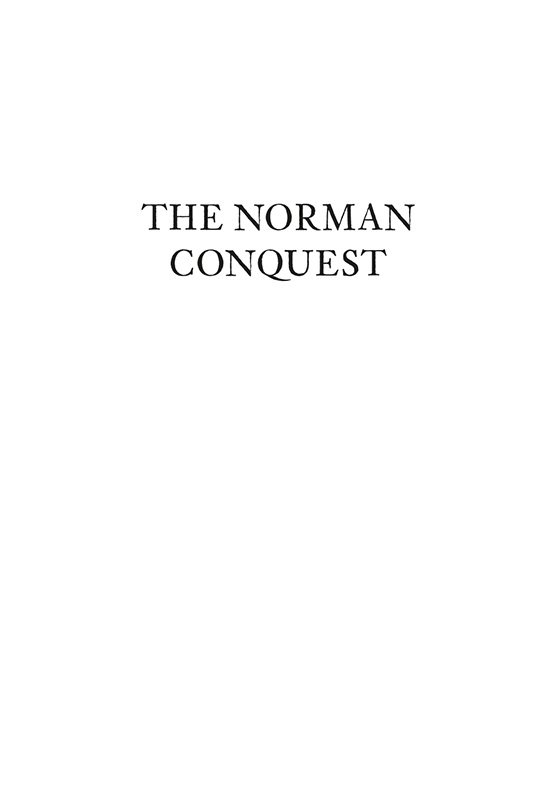First published 2016
Amberley Publishing
The Hill, Stroud
Gloucestershire, GL5 4EP
www.amberley-books.com
Copyright Teresa Cole, 2016
The right of Teresa Cole to be identified as the Author of this work has been asserted in accordance with the Copyrights, Designs and Patents Act 1988.
ISBN 9781445649221 (PRINT)
ISBN 9781445649238 (eBOOK)
All rights reserved. No part of this book may be reprinted or reproduced or utilised in any form or by any electronic, mechanical or other means, now known or hereafter invented, including photocopying and recording, or in any information storage or retrieval system, without the permission in writing from the Publishers.
British Library Cataloguing in Publication Data.
A catalogue record for this book is available from the British Library.
Typesetting and Origination by Amberley Publishing.
Map illustration by Thomas Bohm, User Design, Illustration and Typesetting.
Printed in the UK.
CONTENTS
AUTHORS NOTE ON NAMES
Anglo-Saxon and Danish names will be found with many variations in spelling. In particular the at the beginning of the names of Saxon nobility, with no real modern equivalent, has commonly been rendered as A or E (Alfred or Edith). In general I have used the simplest and most commonly recognised version of a name, except where a multiplicity of Sweins and Ediths at one time can be distinguished more easily by a variation in spelling. The one exception to this rule is made in the case of the father of Edward the Confessor, who has been so damned by the name Ethelred the Unready that I have preferred to use the alternative Athelred in the hope it might buy him a more sympathetic hearing.
1
EDWARD AND THE VIKINGS
10031017
The one fact that anyone can tell you about Edward the Confessor is that he died in 1066, perhaps adding that his death was followed by the Norman Conquest. If pushed they might be able to add that he was an old man when he died. How he might have filled the long years of his life, however, and what was happening to the country he ruled during those years, has long been a matter for the professional historian and a closed book to everyone else.
It has always been convenient to divide history into slices like a particularly long and rich fruit cake. Where the knife might fall in some eras has been argued over, but the division of the Norman Conquest is a very clear and obvious one. So in most histories Edward is either a footnote to the Anglo-Saxon era, or a brief scene setter before the bloodshed of the Battle of Hastings. Thats not my period, an historian will say of an event a few years before or after the time of his specialist study.
For the people who lived through those times, of course, there was no such clear division. Life might change dramatically but it was still life, fathers, sons and grandsons each leaving their greater or lesser mark on the years of their lifespan, and their own legacy for the future. This is particularly true of the years before and after the Conquest. To miss out the life and times of Edward is to miss the whole first act of the drama, and to risk leaving what followed without any really satisfactory explanation. For the events of 1066 involved not two players but three: the English, the Normans and the Scandinavians. The history of the Danes and Norse had been entwined with that of the English for centuries, and they too had a decisive part to play in that momentous year.
When Edward died in his bed in January 1066 he was securely King of England. That title, though, was of very recent coining. Most of his predecessors had claimed only to be King of the English. Indeed the idea of England as a single entity was only gradually becoming a solid fact rather than a distant dream.
From the time of the coming of the Angles and Saxons, around the fifth century, the land we call England had been divided into a number of kingdoms, frequently warring among themselves and growing bigger or smaller as a result of those conflicts. Though traditionally referred to as the Heptarchy, there were often more than seven of them, and the peninsula of Devon and Cornwall was excluded from the count entirely, sometimes being referred to as West Wales, and holding on to pre-existing British traditions.
Gradually the lesser kingdoms became absorbed into the greater until, by the ninth century, there were three major powers, Northumbria, Mercia and Wessex, with a lesser kingdom of East Anglia surviving as a separate entity. It took an attack from an outside force to make people begin to think of themselves as English rather than Mercian or West Saxon, and that attack was the first coming of the Scandinavians.
In 793, according to the Anglo-Saxon Chronicle, the church at Lindisfarne off the coast of Northumbria was sacked by heathen men with much slaughter and brutal robbery. Fearsome omens were also noted for that year, possibly with the benefit of hindsight, including whirlwinds and fiery dragons seen flying in the sky. More likely the dragons came by sea, and soon the famous dragon-headed Viking longships were a familiar bringer of terror to those dwelling anywhere near the coast, or indeed a major river, as they raided up and down the British Isles. By the mid-ninth century, as Churchill noted, the Viking sailors had become soldiers, ready to fight and win battles against the armies of the ruling kings, and casting envious eyes at the prosperous and fertile land that appeared to be at their mercy.
The Vikings who came to invade and eventually become settlers were predominantly Danish. East Anglia fell to them, along with substantial parts of Mercia and Northumbria, and only the stubborn heroism of the West Saxons prevented the whole of the land being overrun. King Alfred, rightly titled the Great, succeeded in drawing a line which the invaders could not cross, and a peace of sorts was eventually established by what is known as the Treaty of Alfred and Guthrum around 884. This basically divided the land with a line roughly from London to Chester. An area of Danish influence lay to the north and east, with an area of English influence to the south and west.
The treaty established a framework for relations between English and Danes rather than a political boundary, but the kingdoms of Jorvik (around York), Danish East Anglia and the Danish areas of east Mercia and Lindsey (Lincolnshire) known as the Five Boroughs were for a time ruled by the leaders of the Danish settlers who now moved in to share the land with their English predecessors. Nor did it mark the end of hostilities.
Men of Wessex and Mercia had fought together to halt the Danes, and now united again in supporting the children of Alfred to reclaim the lost lands. Edward the Elder, King of Wessex, together with his sister Athelfleda, the so-called Lady of the Mercians, scored victory after victory, until Edwards son, Athelstan, who had been brought up in the Mercian court, could be recognised as overlord of all, for the first time bearing the title King of the English.
The lands he ruled were still divided but the Danish settlers had not come in sufficient numbers to displace the earlier population. Certainly some English lost their lives and their plots, but there was land enough to be shared by all. The Danish presence is shown by clusters of place names, the -by, -thorp and -thwaite infilling among the Saxon -ham and -ton in the Danish areas. The rapid adoption of Christianity by the formerly pagan invaders also made interaction and intermarriage easier, and it was not long before children in the same families were being found with both English and Danish names. It should be remembered, too, that the Danish homeland was very close to the place from which the Angles and Saxons themselves had come a few centuries before. The royal houses of the English kingdoms, in the more fanciful parts of their genealogies, had all claimed descent from the Nordic god Odin. It has been suggested, too, that at this time the languages were still mutually understandable with a little effort.

